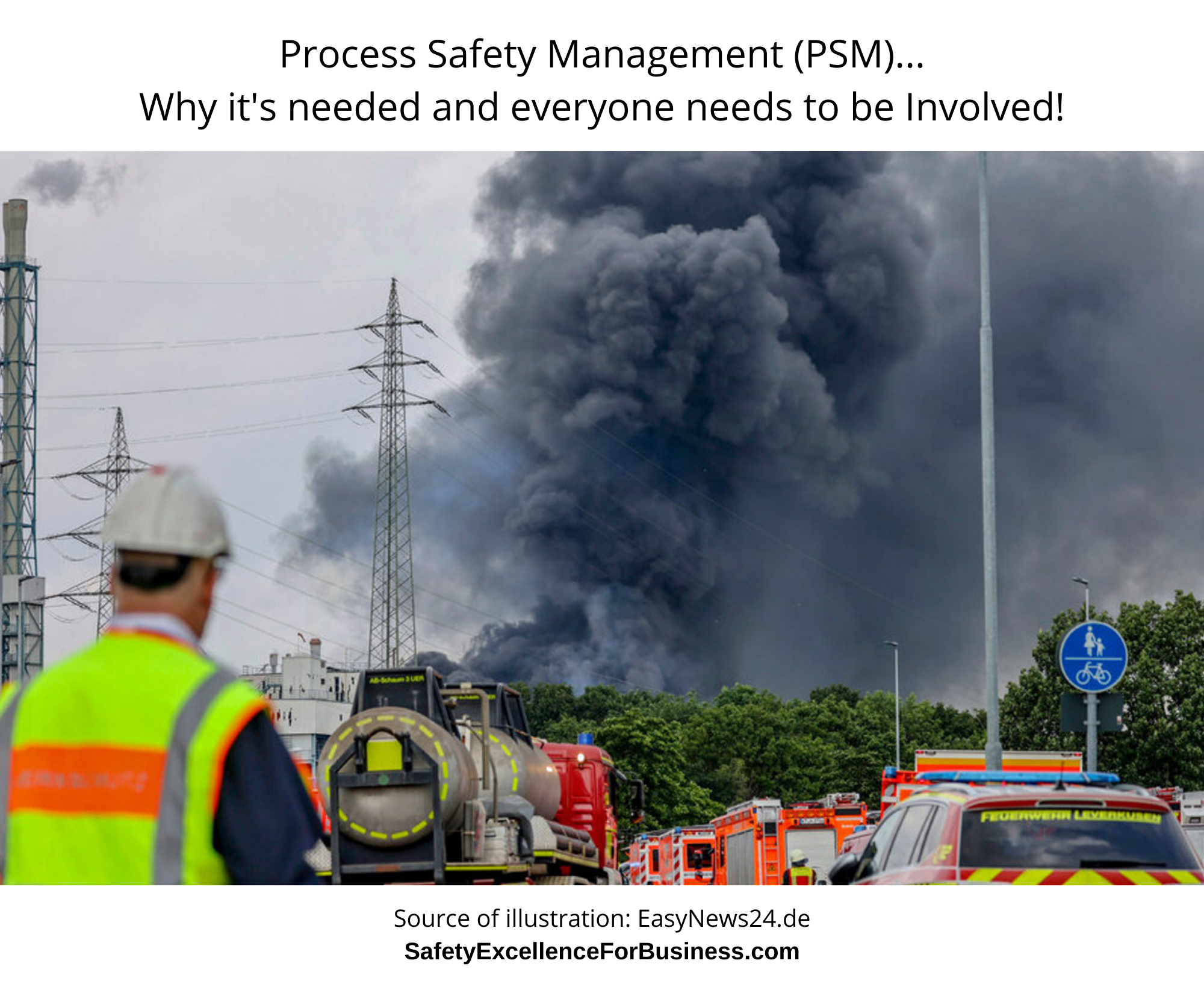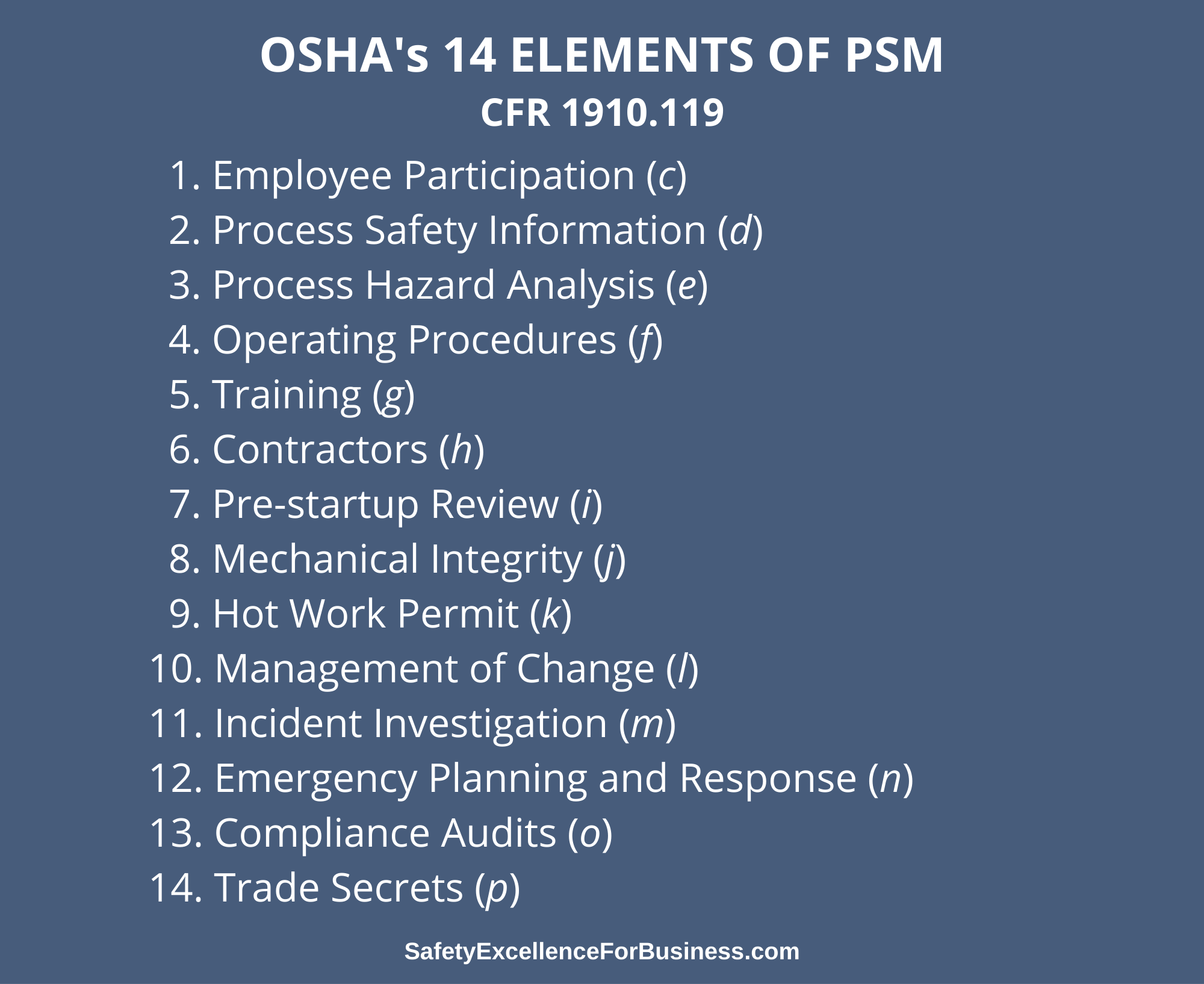Why Process Safety Management is needed and everyone needs to be Involved!
Week after week I read of explosions and fires at refineries, chemical plants and dust-producing operations like sawmills and grain elevators. There are usually people hurt or killed. Communities are forced to shelter in place or evacuate. Families suffer great loss. There are always estimates of the loss of money and the difficulty of getting back into production.
These are sad situations that are usually avoidable if the managers and engineers would only do their duty to conduct strong process safety management (PSM) work. PSM does require having trained engineers to do the work. It may require money when a defect is found the needs repair. It is often routine and boring work as in inspecting relief valves, for example. It often is narrowly focused on just the specific process without taking the whole system into mind. This is critical work that responsible managers and engineers need to conduct rigorously. It is a necessary discipline. (Process Safety Management came about as OSHA’s response to prevent a disaster like Bhopal).
When I read the reports of these disasters, there are often long explanations about things. There was one I read about where the fluctuating liquid levels in distillation columns were unstable and causing the operators continuous problems. The instruments were not showing the full nature of the problem of the rising liquid levels which, one day, got so out of control that the distillation column overflowed, releasing a flammable cloud which ignited and killed a lot of people. The incident investigation discussed all sorts of technical problems which were not addressed since they did not look too serious. But they did not include the whole system.
Nowhere was there any discussion mentioned about what the operators were experiencing each day and struggling to control. It was clear that they had a serious problem, but no one asked them about it. Why do the technical people treat the men and women who operate the facilities as if they did not know anything. These people live with the processes! They have a lot to offer!
When I was the Plant Manager of the big DuPont Belle, West Virginia plant, we brought occupational safety, occupational health, and PSM together as a whole safety system effort where each part helped the other parts. We created the conditions where people felt it was okay to talk openly together about the problems and address them. Where they helped each other. Trust was built so people could be able to do their best. The people came together enabling us all to perform much better.
Our Total Recordable Injury rate dropped by 97% to ~0.3 and our total emissions to the environment dropped by 95% in just 3 years. I look at total emissions to the environment as a key PSM metric since there is less waste from poorly running processes and fewer upsets or failures blowing stuff into the air.
Building trust and interdependence among the people is a very important part of management’s work. It is easy to do this using the Cycle of Intelligence, listening and learning together. Rosa Carrillo has written a fine book about the importance of the Relationship Factor entitled “The Relationship Factor in Safety Leadership.” This is easy to do if we just go into our organizations, share information, listen, and learn together. It would have avoided the disaster I mentioned earlier in this newsletter.
Yet most managers do not get out of their offices, talk with the people sharing information, listening, and learning together. Why is this? Rosa’s work and my work clearly show the great benefits to safety and productivity, yet managers shy away from this.
WHY????
In your own organization, what are you doing to open up and share information? What are you doing to open up a safe space where it is okay for people to talk and share? Are you bringing a diverse group of people together to talk and learn?
Each of us can make a positive difference. Will you?








Speak Your Mind